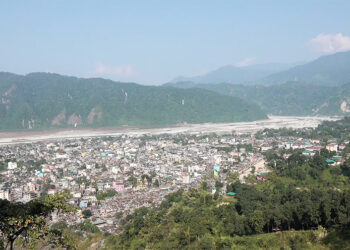 Bhutan’s economy is expected to grow by 6.6 per cent in the current financial year, a significant rise from approximately 4.9 per cent recorded in the previous financial year. This is according to the latest World Bank’s South Asia Development Update. It states that the country’s growth rate is now aligning with its pre-pandemic average, placing Bhutan among a select few in South Asia, along with India and Nepal, to have achieved this post-COVID stabilisation.
Bhutan’s economy is expected to grow by 6.6 per cent in the current financial year, a significant rise from approximately 4.9 per cent recorded in the previous financial year. This is according to the latest World Bank’s South Asia Development Update. It states that the country’s growth rate is now aligning with its pre-pandemic average, placing Bhutan among a select few in South Asia, along with India and Nepal, to have achieved this post-COVID stabilisation.
According to the report, the growth in the early 2024-2025 Financial Year was supported by the lifting of earlier restrictions aimed at protecting the balance of payments. These included bans on vehicle imports and construction loans.
In the previous fiscal year, the country recorded strong growth in the services sector, particularly in finance and tourism, following the reopening of its borders after the COVID-19 pandemic.
However, agricultural growth was modest, and hydropower exports declined due to increased domestic electricity use, partly driven by cryptocurrency mining operations during the period.
Meanwhile, the growth is further expected to increase to nearly 7.6 per cent in the next financial year.
Despite these positive projections, the current account deficit remains high at 17.6 per cent of GDP. However, increasing remittances have bolstered foreign exchange reserves, which by June last year, were sufficient to cover just under five months of imports.
Meanwhile, the report states that in the upcoming financial year, the government deficit is expected to rise due to higher capital spending, lower than expected tax revenue from the goods and services tax reform, and growing interest payments on commercial loans.
Kinley Bidha
Edited by Kipchu









